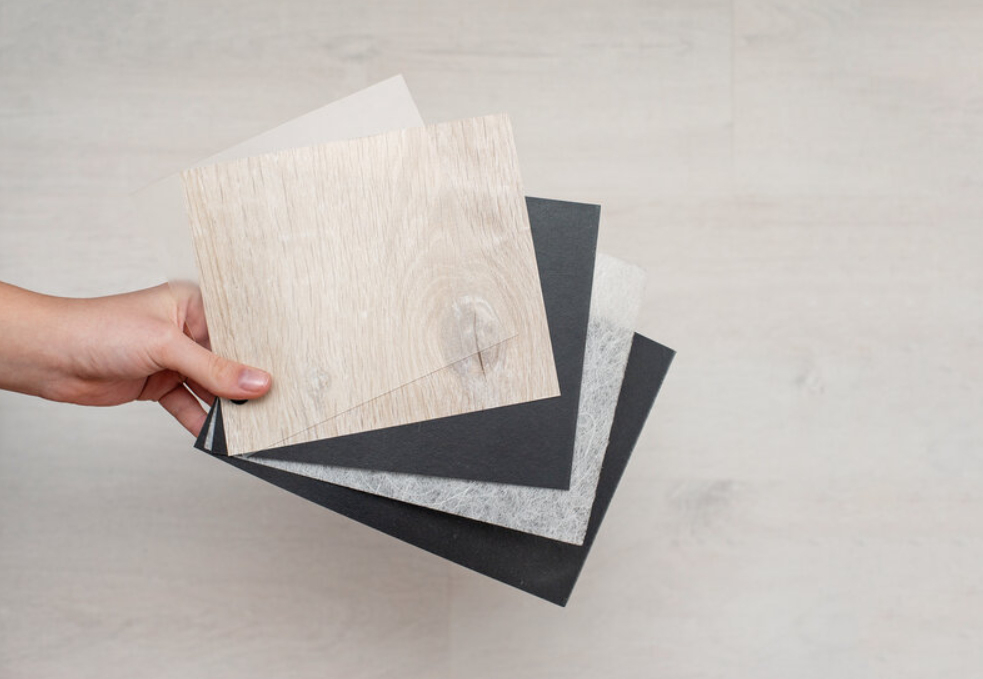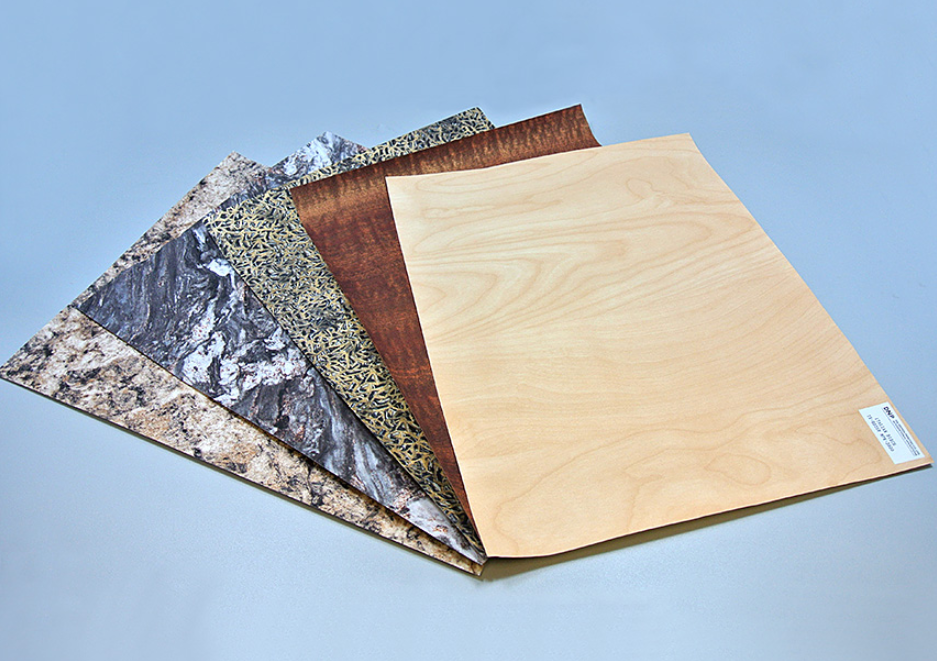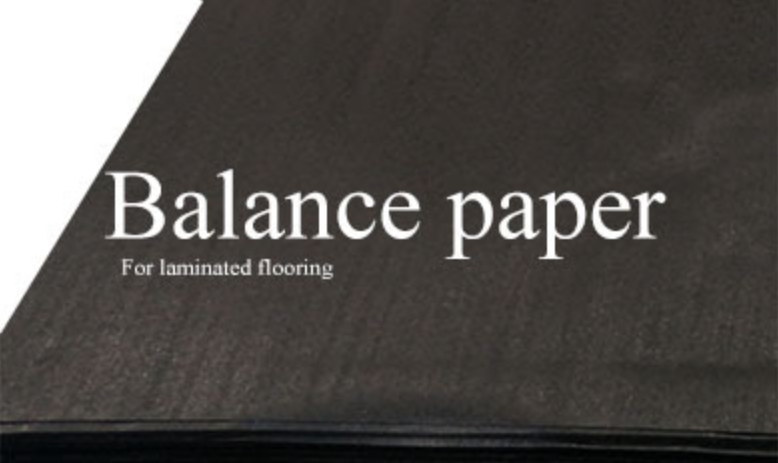Production Process: How Laminate Flooring Is Made
Laminate flooring isn’t just about looks—it’s about what’s under the hood too. The layers, the materials, the whole process come together to make a floor that’s not only stylish but tough and practical for just about any room. Ever wondered how laminate flooring actually gets made? Let me break it down for you, step by step, from start to finish.
We’re talking from the core right up to that tough-as-nails top layer that laughs in the face of scratches. Each part has its role, helping the floor last longer and perform better. I’m gonna take you through every layer in this article, explain how it’s made, and why it works so well in both homes and businesses. Trust me, once you know the whole process, you’ll see why laminate flooring is such a solid choice. Based on what I’ve seen, the way it’s built is what makes it the go-to option for so many people.
The Core Layer: High-Density Fiberboard (HDF) in Laminate Flooring
The core layer is what gives laminate flooring its strength—it’s like the backbone of the whole thing. From what I’ve seen, most quality laminate uses either High-Density Fiberboard (HDF) or Medium-Density Fiberboard (MDF).
Both are solid choices, but I’d say HDF is extra tough for heavy foot traffic, while MDF is more stable and works great for a smooth finish. Either way, you’re getting a floor that can handle a lot and keep looking good for a long time.
How I Understand the HDF/MDF Core Layer Is Made
The core layer gives laminate flooring its strength—it’s the backbone of your floor. I’ve seen many quality laminates in my work. They use either High-Density Fiberboard (HDF) or Medium-Density Fiberboard (MDF). Both are good choices. HDF is tougher for busy areas with lots of foot traffic. MDF is more stable and creates a smooth finish. Both options will give you a durable floor that looks good for years.
Wood Selection & Fiber Preparation: The process begins with picking quality wood. This includes sturdy hardwoods or recycled wood fibers. Workers chip and refine these into even fibers. This step matters because even fibers make strong, dense boards—both HDF and MDF.
From Raw Wood to Fiberboard: This is where I find it gets exciting. At Baier, we don’t use outside suppliers for this key part. We run our own factory. We handle everything from wood selection to making HDF and MDF boards. We pick the best wood and turn it into fibers. We then process these to the perfect texture. This hands-on approach gives us better control of quality, performance, and product flow.
Resin Blending: When fibers are ready, workers mix them with melamine resin or other resins like UF, MUF, MUPF, or MDI. The exact mix ratio creates a strong, long-lasting, water-resistant core.
High-Pressure Forming: Workers form the coated fibers into mats. These mats go through high pressure (650-1300 kg/m³). The best pressure is 650–850 kg/m³, with heat at 210–230°C. This makes boards from 1 mm to 15 mm thick. Most flooring I see uses boards between 1–5 mm. Our MDF core supplier integrates advanced resin blending and high-pressure forming techniques to deliver durable flooring bases.
Precision Cutting & Finishing: After pressing and cooling to prevent warping, workers cut the boards with exact measurements. This allows for different installation methods. Options include square, beveled, or tongue-and-groove edges.
Sanding: Next, workers sand the panels to create a smooth surface. This smooth base is needed before adding the top layers for design and wear protection.
Key Mechanical Properties & Benefits I’ve Seen
Density and Durability: HDF is very dense. It can reach up to 1300 kg/m³ for ultra-thin 2 mm boards. It also offers excellent impact resistance. This means your floors can take dropped objects and heavy furniture without denting.
Moisture Resistance: The melamine resin gives the core good protection against moisture. I think this is a critical feature for places like kitchens and entryways.
Precision Profiles: The consistent density allows for perfect click-lock or tongue-and-groove systems. This makes installation much simpler. It also keeps the seams tight over the years.
Eco-Friendly Production: I admire that many HDF makers use large amounts of recycled wood fibers. They also manage the lignin content, which is often 10–20% of the oven-dried fiber weight. This practice reduces waste and helps the product earn green building certifications.
Why the Core Layer Matters So Much
From my perspective, a quality HDF core means your laminate flooring will:
Resist denting and wear, even in areas with lots of foot traffic
Offer moisture protection below the surface
Stay flat, level, and firmly locked—year after year
I believe the engineering of the HDF core is a key reason laminate flooring can stand up to solid wood or stone. It delivers comparable performance at a much more affordable price.
Expert Opinion:
“From my 15 years of installing floors, I can tell you the HDF core determines a laminate floor’s success. Many homeowners don’t know this engineered core is often better than natural wood. It has a more solid, even structure and handles moisture much better. I have installed thousands of square feet of laminate with these quality HDF cores. I’ve seen that they are much more stable over the years compared to cheaper floors. The way these cores are made is very precise. The wood fibers and glue are bonded to create a strong board. This quality is why I feel confident offering my clients warranties of 20 years or more.”
——Wu , Certified Flooring Installation Specialist, National Wood Flooring Association Member
The Wear Layer: The Tough Topcoat That Keeps Your Floor Looking New

From my experience, the wear layer is the clear, tough top surface that shields laminate flooring from everyday damage. Its main component is melamine resin. This material is excellent at resisting scratches, stains, and fading from sunlight.
Manufacturers often add aluminum oxide crystals to make this layer even stronger. This gives it a huge boost in protection against scrapes. I find this combination makes laminate a great choice for active households. It also holds up well in busy commercial spaces like stores and offices.
Key Properties of the Wear Layer
Melamine Resin: I see this as the main shield against scratches and stains. It keeps your floors looking new, even in a bustling home.
Aluminum Oxide Add-in: This ingredient seriously boosts the wear layer’s strength. You’ll find it in most premium or commercial-grade laminates. It’s your best defense against scuffs from furniture, pet claws, and shoes.
Layer Makeup: For vinyl flooring, people look at thickness in mils, with commercial types going up to 28 mils. With laminate, I suggest you focus on the number of melamine layers and the amount of aluminum oxide, not just the thickness.
Clarity: The top layer is completely clear. This allows the beautiful decorative print, which looks like real wood or stone, to stay sharp and realistic for years.
Performance and Durability
Scratch & Impact Resistance: It stands up to dragged chair legs, dropped toys, pet claws, and even high heels.
Stain & Chemical Resistance: It repels most common spills, which makes cleaning much easier.
UV Protection: This feature helps preserve the floor’s color. It stops the realistic print from fading in the sun.
Real-World Examples
Entry-Level Quality: These floors might have a single melamine layer with less aluminum oxide. I recommend this type for bedrooms or other low-traffic areas.
Premium/Commercial Grade: This grade uses multiple, stronger melamine layers with a lot of aluminum oxide. I believe this is what you need for kitchens, hallways, and retail stores with constant foot traffic.
Industry Ratings and Practical Benefits
AC Rating (Abrasion Class): This rating shows you the floor’s durability. I suggest looking for AC3 or higher for homes and commercial use.
Warranty Impact: A better wear layer typically means you get a longer warranty. You can find top-quality products with warranties of 20+ years.
Maintenance: The smooth, protective surface means dirt and liquids wipe away easily. This helps keep your floors looking fresh with very little work.
I believe the wear layer truly determines how long your laminate flooring will last and how easy it is to care for. It’s the key to knowing how well it will hold up in a busy space.
The Decorative Layer: The Secret to Realistic and Stylish Laminate Floors

The decorative layer is what makes laminate flooring look so real and stylish. I think it’s the most important part for appearance. This layer is a high-resolution printed image. It’s made to look just like real wood, stone, or unique artistic designs.
How the Decorative Layer Is Made
Special Inks & Paper: The image is printed on special paper using modern digital tech. From what I’ve seen in manufacturing, this paper must be tough. It holds up against high heat (up to 400°F) and a lot of pressure (up to 600 psi).
Digital Printing for a Real Look: Digital printing creates very detailed and lifelike images. You can find styles from classic oak and maple to creative options like leaf patterns or abstract art.
Getting the Alignment Right: Factories use digital cameras to line up the decorative layer on the core board. This ensures the pattern flows smoothly from one plank to the next without any breaks. Customized laminate flooring OEM projects benefit greatly from our advanced digital printing capabilities and design flexibility
Textured Finishes: Some floors have a special texture pressed into the decorative layer. This process, which I find fascinating, is called embossed-in-register technology. It creates a surface with a realistic look and a feel you can touch. Using embossed-in-register technology, we add realistic textures that elevate both appearance and feel.
Manufacturing Methods:
Direct-Pressure Laminate (DPL): In DPL, the design is fused straight onto the core layer.
High-Pressure Laminate (HPL): For HPL, the decorative layer first bonds to a protective overlay. Then, that combination is attached to the core. Based on my experience, this method makes the floor more durable.
Design and Application Options:
Standard wood-look planks: Oak, hickory, maple, walnut, and exotic species.
Stone and tile designs: Realistic marble, travertine, slate, and even ceramic looks.
Specialty visuals: Custom prints such as company logos, creative motifs like leaves or paint splatters.
Features and Benefits
Thickness Options: These laminate planks are usually between 6 mm and 14 mm thick. I recommend going for thicker planks because they offer more realistic textures and better wear.
Durability: The paper and inks are made to last. They can handle a tough installation and everyday use while keeping the colors bright.
Custom Looks: High-resolution printing gives you many design choices. This means you can find the exact look you want for your room.
In my opinion, the decorative layer is key to how good laminate flooring looks. It uses advanced printing and careful manufacturing to create authentic, lasting styles.
The Backer: Your Laminate Floor’s Foundation for Stability

The backer is the bottom layer of your laminate flooring. I think of it as the foundation. Its main job is to stop moisture from damaging the board. It also keeps each plank flat and balanced.
What Is the Backer Layer Made Of?
Manufacturers make most backers from melamine resin-saturated paper. This is a special paper soaked in a moisture-fighting resin. I’ve noticed some high-end products use a thin layer of the same material as the core. In my experience, this design gives the plank excellent stability. It provides great protection from moisture that can seep up from the subfloor.
Typical Thickness:
From what I’ve seen, quality backers are about 0.1–0.2 mm thick. This small thickness adds a lot of strength without making the flooring too expensive.
Technical Purposes and Practical Benefits
Keeps Planks Flat:
The backer balances out the pressure from the top layers. This is what keeps the plank from warping or bending. I find this is important when the temperature or humidity in a room changes a lot.
Blocks Moisture:
A key benefit is how it resists moisture. I think of the backer as a shield built right into the plank. It helps prevent swelling, layers peeling apart, and other damage from water. This is essential for kitchens, basements, or any area where spills might occur.
Industry tests show a good backer can reduce moisture absorption by over 80%. This is compared to boards that don’t have this special stabilizing layer.
Keeps Its Shape:
This added stability helps the floor handle more than just moisture. It can also take on heavy foot traffic and the weight of furniture. I’ve seen that it stops the planks from twisting or losing their shape over the years.
Helps with Installation:
Each plank has a smooth bottom because of the backer. This smoothness helps cover minor bumps on the subfloor. From my experience, this makes the final floor look better and last longer.
Manufacturing and Performance
During Direct Pressure Laminate (DPL) manufacturing, all the layers are fused with 300–600 psi of heat and pressure. The bond is permanent. This process creates a single, solid piece. I know this structure is what makes it so durable for years. Working with a reliable OEM laminate flooring factory lets you customize your flooring solutions for various markets.
Why the Backer Layer Matters
I believe the backer is what makes laminate flooring tough enough for difficult rooms without breaking down. It allows you to install this flooring in humid basements or busy kitchens. You can even use it in commercial spaces without fearing that it will warp, bend, or have its layers peel apart. For a very thin layer, you get a huge boost in how long the floor will last and keep its shape. I recommend paying attention to the quality of the backer.
